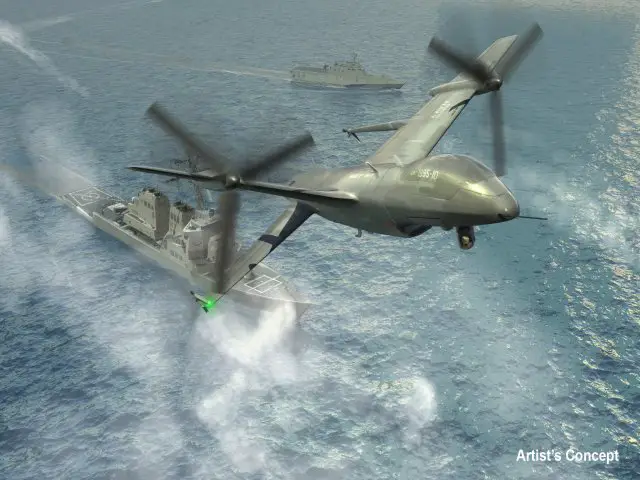Breaking news
Tern Progress Toward Enabling Small Ships to Host their own Unmanned Air Systems (UAS).
 Tern seeks to enable forward-deployed small ships to serve as mobile launch and recovery sites for medium-altitude, long-endurance unmanned aerial systems (UAS). |
|||
These systems could provide long-range intelligence, surveillance and
reconnaissance (ISR) and other capabilities over greater distances and
time periods than is possible with current assets, including manned and
unmanned helicopters. Further, a capacity to launch and retrieve aircraft
on small ships would reduce the need for ground-based airstrips, which
require significant dedicated infrastructure and resources. The two prime
contractors selected by DARPA are AeroVironment, Inc., and Northrop Grumman
Corp.
“To offer the equivalent of land-based UAS capabilities from small-deck ships, our Phase 2 performers are each designing a new unmanned air system intended to enable two previously unavailable capabilities: one, the ability for a UAS to take off and land from very confined spaces in elevated sea states and two, the ability for such a UAS to transition to efficient long-duration cruise missions,” said Dan Patt, DARPA program manager. “Tern’s goal is to develop breakthrough technologies that the Navy could realistically integrate into the future fleet and make it much easier, quicker and less expensive for the Defense Department to deploy persistent ISR and strike capabilities almost anywhere in the world.” The first two phases of the Tern program focus on preliminary design and risk reduction. In Phase 3, one performer will be selected to build a full-scale demonstrator Tern system for initial ground-based testing. That testing would lead to a full-scale, at-sea demonstration of a prototype UAS on an at-sea platform with deck size similar to that of a destroyer or other surface combat vessel. |
|||



















